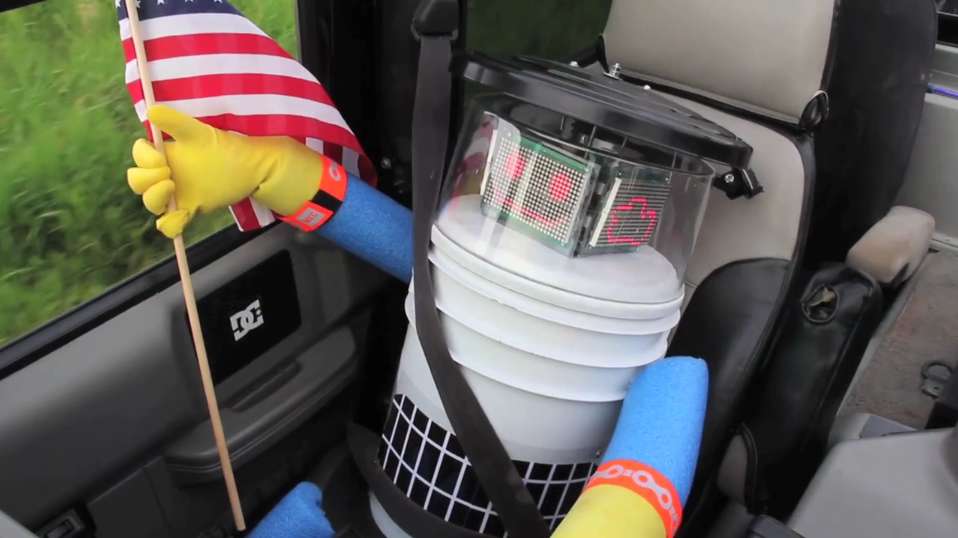
Last June, a creation known as hitchBOT successfully hitch-hiked its way across Canada. It has since also traversed Germany. This July, its team decided to see how it would make out in the US. Well, it lasted just over two weeks, until it was found destroyed in Philadelphia late last week.
hitchBOT was designed by Dr. David Harris Smith of McMaster University and Dr. Frauke Zeller of Ryerson University. It is incapable of moving on its own, requiring humans to pick it up from the side of the road and drive with it for a while (while charging its batteries from their car’s dashboard electrical outlet), before dropping it off again for someone else to find.
To make things more interesting, it’s equipped with artificial intelligence, a microphone, speech recognition and speech processing capabilities, allowing it to have “conversations” with its human companions. It also has 3G Wi-Fi and GPS, letting it access the internet, post tweets, and be aware of its geographical location.
Its US trip began on July 17th, with it setting out from Boston en route to San Francisco. Last week, however, its creators received a photo of it vandalized “beyond repair” in Philadelphia. On Aug. 1, they tweeted “Oh dear, my body was damaged, but I live on back home and with all my friends. I guess sometimes bad things happen to good robots! My trip must come to an end for now, but my love for humans will never fade.”
Since then, members of Philadelphia’s hacker community have offered to rebuild the robot and get it back on the road again. A video also surfaced that was claimed to be surveillance camera footage of hitchBOT’s attacker performing the dirty deed, although that has since been declared a hoax.
While leaving a robot unattended at the side of the road may seem foolhardy to some, Harris and Zeller originally conceived of the project specifically as a means of testing whether or not robots could trust humans.
“We know that many of hitchBOT’s fans will be disappointed, but we want them to be assured that this great experiment is not over,” they state on the project website. “For now we will focus on the question ‘what can be learned from this?’ and explore future adventures for robots and humans.”